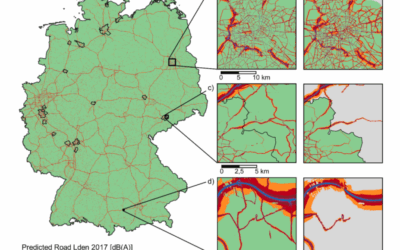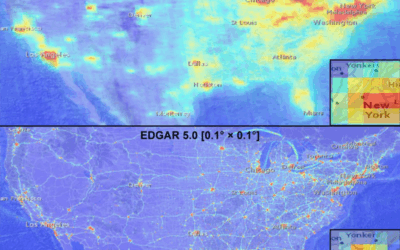New publication on the liveability in large housing estates in Germany
Researchers from the Earth Observation Center (EOC) of the German Aerospace Center (DLR), of the ifo Institute – Leibniz Institute for Economic Research at the University of Munich as well as of our Earth Observation Research Cluster of the University of Würzburg teamed up for a study on the liveability in large housing estates. The paper titled “Liveability in large housing estates in Germany – Identifying differences based on a novel concept for a walkable city” was just published in the journal Landscape and Urban Planning by Manuel Köberl, Michael Wurm, Ariane Droin, Oana M. Garbasevschi, Mathias Dolls and Hannes Taubenböck. This study was funded by the BMBF under the DFINEQ initiative (grant no. 01UI2208B) and partly by the HORIZON-Europe FUTURAL initiative (grant no. 101083958).
Please find the full paper here: https://www.sciencedirect.com/science/article/pii/S016920462400149X
Here is the abstract of the paper: In times of rapid urban expansion, urgent demand for housing and simultaneously efforts to minimise the use of urban land are competing objectives. The concept of large housing estates (LHE) has therefore regained interest. This resurgence raises questions about the living conditions within these historically stigmatized complexes. While liveability studies often rely on surveys, we present a globally applicable quantitative approach to assess liveability along the dimensions of walkability, accessibility and built-up morphology. Using geospatial data and a delineation framework based on walking distances, we identify disparities in liveability. We identified three different planning paradigms for LHEs in Germany: the ‘structured and low-dense’ type, the ‘urbanity by density’ type in Western Germany and the ‘socialistic city’ type in Eastern Germany. Our analysis reveals significant differences in accessibility and morphology, that can be attributed to the historical guiding principles. Walkability, in contrast, seems to be influenced more by environmental elements (rivers, forests) and artificial barriers (railway lines, motorways) than by planning paradigms. The ‘structured’ type is characterised by monofunctionality, limited access to urban infrastructure, low building density, but a high proportion of green spaces. The ‘urbanity by density’ type has significantly higher building densities, better accessibility, but less urban green. The ‘socialistic’ urban type could not be clearly categorised, but seems to be a mixture of the other two types. In our analysis, the ‘urbanity by density’ typology predominantly performed the best and, as such, emerges as the most liveable typology, potentially serving as a guiding model for future construction projects.
This paper is part of our research works on the topics ‘Large housing estates’, ‘Walkability’ and ‘Quality of life’.
For further reading on ‘Large housing estates’, we point to https://repository.corp.at/433/ ; https://elib.dlr.de/194422/ and https://elib.dlr.de/203431/
For further reading on ‘Walkability’, we point to https://www.sciencedirect.com/science/article/pii/S0198971522001375 and https://www.sciencedirect.com/science/article/pii/S0198971524000449
For further reading on ‘Quality of life’, we point to https://www.sciencedirect.com/science/article/pii/S0198971520302829








